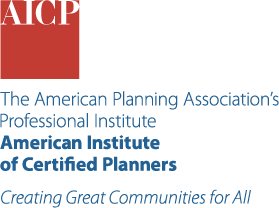Spotlight on Zoning Practice
You Can't Be Family Friendly Without Being Childcare Friendly

Anyone who has ever been reliant on a commercial childcare provider knows just how vital these services are to working families. Without access to a reliable, convenient, and affordable childcare facility, many parents are forced to either reduce their work hours or leave the labor force entirely. Meanwhile, it's tough to operate a childcare business, with narrow profit margins, a persistent post-COVID labor shortage, and a complicated regulatory environment keeping many prospective operators on the sidelines.
As Lauren Sayre, AICP, and Ashley Jankowski, AICP Candidate, note in the June issue of Zoning Practice, "Creating a Childcare-Friendly Community," overly restrictive zoning standards aren't the only barrier to expanding childcare access, but they are a key piece of the puzzle. And for any planner working in a city, town, or county that aspires to be family-friendly, it's worth taking a close look at how childcare facilities are treated in your local zoning code.
Trust the Process
In most communities, zoning standards for childcare facilities are typically aligned with state or local permitting regulations. According to Sayre and Jankowski, these permitting requirements are already doing the heavy lifting in terms of making sure that childcare facilities are safe and healthy places for children to be. That means there is no need to try to squeeze the square peg of operational standards into the round hole of zoning for childcare facilities.
Zoning regulations for childcare facilities should stick to the basics. They should specify permissible locations for both in-home and commercial childcare facilities and, whenever possible, limit use-specific standards to objective physical characteristics that can quickly be reviewed and verified by staff.
Do the Math
The most common objections to broadly permissive zoning regulations for childcare facilities are concerns over traffic, parking, and noise. In response, some communities use zoning to limit the hours of operation or to impose detailed location restrictions. Sayre and Jankowski urge planners and local officials to rethink these approaches.
Many parents need childcare either late at night or early in the morning. Prohibiting operations outside of standard work hours (or limiting the total duration of daily operations) is not a family-friendly approach. Childcare is an essential service, and all local economies depend on off-hours labor.
Additionally, location restrictions that require operators to find locations on major thoroughfares or stipulate a minimum separation between childcare facilities can very easily zone all childcare facilities out of a community. At a minimum, it's crucial to "do the math" and test any proposed location restrictions to ensure ample opportunities to open new facilities in convenient locations.
Subscribe to Zoning Practice

Each issue of Zoning Practice provides practical guidance for planners and land-use attorneys engaged in drafting or administering local land-use and development regulations. An annual subscription to ZP includes access to the complete archive of previous issues.
Top image: THEPALMER / E+


